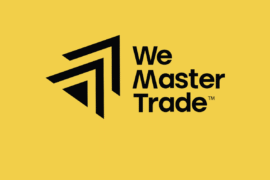This article may contain references to products or services from one or more of our advertisers or partners. We may receive compensation when you click on links to those products or services. Nonetheless, our opinions are our own.
The information presented in this article is accurate to the best of our knowledge at the time of publication. However, information is subject to change, and no guarantees are made about the continued accuracy or completeness of this content after its publication date.
In a world where financial burdens can feel insurmountable, Sheena’s journey of overcoming $10 million in debt stands as a testament to resilience, determination, and strategic planning. As she navigated through overwhelming financial pressure, Sheena’s story resonates with anyone facing similar struggles. It offers valuable lessons about the path to financial freedom, shedding light on the ways she transformed financial despair into recovery and empowerment.
- Understanding Sheena’s Journey Through Debt Challenges
- Essential Strategies Sheena Used to Tackle Her Debt
- Recognizing Financial Infidelity in Your Journey
- Transforming Your Mindset: Lessons from Sheena’s Experience
- Practical Steps to Create Your Debt Payoff Plan
- Building a Sustainable Financial Future
- Empowering Yourself: Resources for Financial Education
- Navigating Financial Irresponsibility and Its Impact
- Frequently Asked Questions
- Recommended Reads
Understanding Sheena’s Journey Through Debt Challenges
Sheena’s journey towards financial recovery was not a straightforward one. She faced a staggering $10 million in financial obligations, and she had to uncover the root causes of her debt to build a way out. The key factors that contributed to her financial struggles included:
- Overexpansion of Business: Rapid growth without adequate financial cushion left her vulnerable.
- Mismanaged Cash Flow: A lack of control over income and expenses led to overspending.
- High-Interest Loans: Taking on loans with high rates exacerbated her financial challenges.
Once Sheena had clarity about these issues, she embarked on her journey to reclaim financial independence. Her approach was built on practical and sustainable strategies:
| Strategy | Description |
|---|---|
| Budgeting | Creating a monthly plan to track income and expenses. |
| Debt Snowball | Paying off the smallest debts first to build momentum. |
| Negotiation | Working with creditors to lower interest rates and restructure payments. |
Her progress was slow but steady, showing that persistence and discipline can help overcome even the most daunting financial challenges.
Essential Strategies Sheena Used to Tackle Her Debt
Sheena’s success in repaying her debt was rooted in a systematic approach. Here’s how she did it:
- Realistic Budgeting: She tracked her finances meticulously, understanding her income, expenses, and areas for cutting back.
- Negotiating with Creditors: Instead of avoiding them, Sheena proactively worked with creditors to lower interest rates and create manageable payment plans.
- Prioritizing High-Interest Debt: Using the debt avalanche method, she focused on paying off loans with the highest interest rates first.
- Earning Extra Income: She took on side gigs and freelance work, directing all extra earnings toward debt repayment.
- Building an Emergency Fund: Sheena set aside a small monthly amount for emergencies, preventing further reliance on credit.
Through these actions, Sheena transformed her financial habits, ensuring every dollar worked toward her goal of financial recovery.
Recognizing Financial Infidelity in Your Journey
Financial infidelity, when one partner intentionally hides financial information from the other, can be a destructive force in any relationship. Recognizing the signs of financial infidelity is crucial for building trust and ensuring financial transparency between partners. To address financial infidelity, start with open conversations about money—share your income, expenses, goals, and fears.
Establishing joint financial goals and a shared budget can help restore trust. Acknowledging hidden debts or undisclosed spending habits may be painful, but it’s a necessary step for healing. Open communication about money fosters accountability and mutual respect, and it helps create a strong financial foundation for the future.
Transforming Your Mindset: Lessons from Sheena’s Experience
One of Sheena’s most significant realizations was that financial freedom required a shift in mindset. Here are the key lessons she learned:
| Previous Mindset | Transformed Mindset |
|---|---|
| Overwhelmed by debt | Empowered to take action |
| Fear of financial discussions | Open to learning and sharing |
| Passive spending habits | Active budgeting and saving |
Adopting a growth mindset allowed Sheena to view challenges as opportunities to learn. Goal-setting and tracking progress helped her stay motivated and focused on her financial recovery.
Voted "Best Overall Budgeting App" by Forbes and WSJ
Monarch Money helps you budget, track spending, set goals, and plan your financial future—all in one app.
Get 50% OFF your first year with code MONARCHVIP
Practical Steps to Create Your Debt Payoff Plan
If you’re ready to start your own journey toward financial freedom, follow these practical steps:
- Assess Your Debt: Gather all loan statements, credit card bills, and outstanding balances.
- Prioritize Debts: Use the debt snowball or avalanche method to focus your repayment strategy.
- Set a Budget: Identify essential expenses and eliminate unnecessary ones.
Here’s an example of a table that can help organize your debt repayment plan:
| Debt Type | Amount Owed | Interest Rate | Monthly Payment |
|---|---|---|---|
| Credit Card | $20,000 | 18% | $600 |
| Student Loans | $50,000 | 5% | $500 |
| Personal Loan | $30,000 | 10% | $700 |
By following these steps, you can create a personalized debt repayment plan that works for your situation.
Building a Sustainable Financial Future
After eliminating her debt, Sheena focused on securing her financial future. Here’s how you can do the same:
- Maintain a Budget: Regularly track your income and expenses to stay on top of your finances.
- Emergency Fund: Aim to save 3-6 months of living expenses for unexpected situations.
- Invest Wisely: Invest in a diversified portfolio to grow your wealth.
- Continue Learning: Keep enhancing your financial knowledge through books, courses, and podcasts.
By taking these steps, you can protect your financial stability and avoid slipping back into debt.
Empowering Yourself: Resources for Financial Education
To further your financial education, here are some helpful resources:
| Resource Type | Name | Action Step |
|---|---|---|
| Book | The Total Money Makeover | Read one chapter per week |
| Online Course | Personal Finance Basics | Complete by the end of the month |
| Podcast | Smart Passive Income | Listen during commutes |
These tools will guide you as you work toward financial empowerment.
Financial irresponsibility, unlike financial infidelity, is characterized by poor money management habits, such as overspending and neglecting to create a budget. It’s essential to recognize these behaviors and take action. Start by assessing your spending patterns and identifying areas for improvement. Create a budget and set savings goals. By improving these habits, you can move towards financial stability.
Financial irresponsibility can affect relationships and create cycles of guilt and stress. To break this cycle, prioritize open communication with your partner about your finances, set joint financial goals, and work together to develop a plan. This collaborative approach will create a stronger foundation for your financial future.
Frequently Asked Questions
What led Sheena to accumulate $10 million in debt?
Sheena’s debt came from aggressive business expansion, unexpected medical expenses, and unsustainable lifestyle choices.
How did Sheena feel when she realized the extent of her debt?
She felt overwhelmed but used those feelings as motivation to create a structured plan and seek help.
What steps did Sheena take to tackle her debt?
She created a budget, prioritized high-interest debt, negotiated with creditors, and found ways to increase her income.
What sacrifices did Sheena make?
She downsized her living situation, cut back on luxuries, and focused all extra money on debt repayment.
How long did it take Sheena to pay off her debt?
Sheena paid off her debt in five years through disciplined financial management.
What advice does Sheena have for others?
She encourages confronting your financial reality, seeking support, and committing to a structured, realistic debt payoff plan.

Reviewed and edited by Albert Fang.
See a typo or want to suggest an edit/revision to the content? Use the contact us form to provide feedback.
At FangWallet, we value editorial integrity and open collaboration in curating quality content for readers to enjoy. Much appreciated for the assist.
Did you like our article and find it insightful? We encourage sharing the article link with family and friends to benefit as well - better yet, sharing on social media. Thank you for the support! 🍉
Article Title: Sheena’s Road to Million Debt Payoff Victory
https://fangwallet.com/2025/08/07/sheenas-road-to-10-million-debt-payoff-victory/The FangWallet Promise
FangWallet is an editorially independent resource - founded on breaking down challenging financial concepts for anyone to understand since 2014. While we adhere to editorial integrity, note that this post may contain references to products from our partners.
The FangWallet promise is always to have your best interest in mind and be transparent and honest about the financial picture.
Become an Insider

Subscribe to get a free daily budget planner printable to help get your money on track!
Make passive money the right way. No spam.
Editorial Disclaimer: The editorial content on this page is not provided by any of the companies mentioned. The opinions expressed here are the author's alone.
The content of this website is for informational purposes only and does not represent investment advice, or an offer or solicitation to buy or sell any security, investment, or product. Investors are encouraged to do their own due diligence, and, if necessary, consult professional advising before making any investment decisions. Investing involves a high degree of risk, and financial losses may occur including the potential loss of principal.
Source Citation References:
+ Inspo
There are no additional citations or references to note for this article at this time.












































